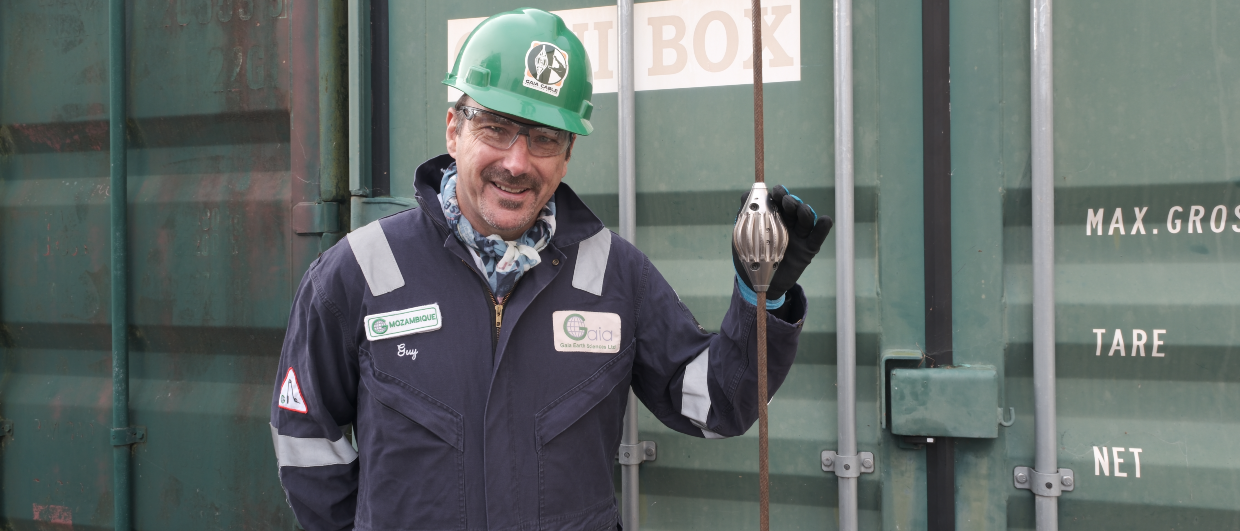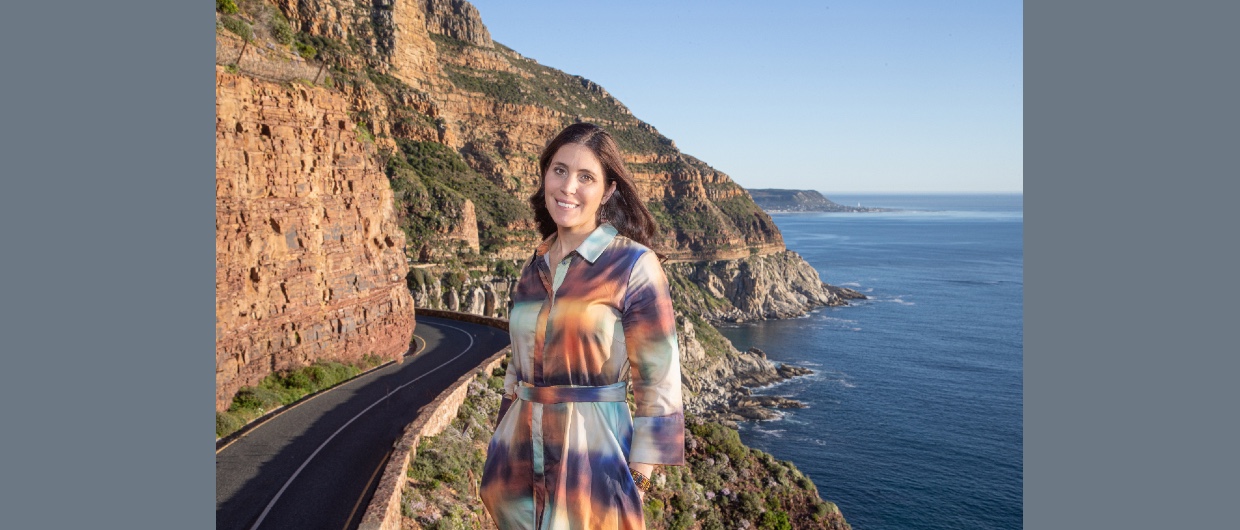“Remember, oil is a product of nature”, says César Patiño when we meet on Teams in April. In his role as a delegate for the International Energy Agency Technology Collaboration Program EOR, he feels the importance of highlighting that oil is a source of energy that can be recovered energy-efficiently, at the same time as acknowledging that we have to work towards a more sustainable way of using the product.
César has just returned to his hometown in Colombia after visiting Norway for a few months to learn about the ecosystem and research being done in the country in the realm of the CO2 value chain, energy efficiency, and technologies towards EOR – Enhanced Oil Recovery.
He works for Ecopetrol, the state oil company that participates in and operates many oil and gas developments in the country. I caught up with César to hear about his career, the current situation when it comes to oil and gas in Colombia, and how the energy transition can be used to produce oil and gas more sustainably.
A common thread
César studied petroleum engineering at the Universidad Industrial de Santander in Bucaramanga, which he finished in 1996. “Ever since my BSc thesis, which was on the use of neural networks and artificial intelligence to better predict subsurface properties, I’ve been intrigued by the use of technology to facilitate our work in the oil and gas sector, ultimately leading into the things I now do with CO2 abatement and the circular economy”, César says.
“My years at Schlumberger, working as a wireline engineer from 1997 to 2006, brought me to places such as Chad in Africa and Mossoro in Brazil. It was a great way to see the world and experience how the oil industry supports the economic development of our communities”, he adds. “Progressing a society from a local and closed agricultural system with poor living conditions to an internationally-oriented place with higher standards of living is
something that I am proud of.”
“When I joined Weatherford (Compact Slim Wireline Business) in Venezuela in 2007, my interest in technology remained and I developed a particular interest in slim hole tools and tractors driving these tools into the borehole.”
“However, despite the technology being available, people did not have the expertise to use it. I saw this as an opportunity and started to involve different members from the geoscience teams. I also decided to invite my team to attend demonstrations of its use, which ultimately resulted in
the full implementation of the tools in the field and profits for the business.”
Soft and hard skills
César was born in the town of Bucaramanga to a mother with strong scientific and academic interests. “My mother is a biologist with a deep interest in nature”, César says. “Since I was a child, I have felt the same passion for study and our natural world.” For César, it is not far removed from his studies in natural resources and hydrocarbon technology.
“My soft skills, networking capabilities and open-mindedness are from my father. He worked in the leather industry in Colombia, and I remember going to places with him where he needed to introduce himself to an entirely new group of people with new leather products. The way he got about that forms an inspiration for me to this day, building up new relationships from scratch. It also forms the basis for my management, political and public sector studies.”
“However, it did take some time to get to this point”, César admits. “When people have certain ways to manage a workflow, there is often a natural resistance against change. I really felt that the skills I inherited from my father and mother were as much required as facts about the new technology to ultimately achieve my goal”, he laughs.

A cold place
César Patiño lives in La Calera, a village high up in the mountains to the east of the capital of Bogota. “I love the cold”, he says, “and here in the mountains, it is surely much colder and calmer than the busy and general conditions in the capital. It is also close to the Chingaza National Parc. The Spectacled bear (Tremarctos ornatus) roams here; I have spotted one a few times when spending time in the area.”
Nobody will turn up
“I have always strongly believed in sharing knowledge and volunteering for the community”, César says. “For me, the Society of Petroleum Engineers (SPE) has been and continues to be the main vehicle to do that, but I have also been grateful to be part of AAPG, EAGE and SPWLA organising committees.
Being part of the SPE board of directors representing Latin America and the Caribbean was a great experience, a road that started in a student chapter organising activities.” When César had the opportunity to organise a conference dedicated to Heavy Oil production in Colombia in 2010 as the Chairman of SPE’s Colombia Section, he did not think about the location to host the conference for long. “It had to be Villavicencio, where most
of Colombia’s onshore heavy oil activity is managed from”, he says.
However, the country did not have the best reputation when it comes to safety and there were concerns that nobody would turn up at the conference.
“We had to fight some battles to convince people that it was still the best place to host this”, César adds. “Ultimately, when one wants to serve a community, there must be a willingness to go there, because not everybody will have the opportunity to travel.”
“It was a great success in the end”, César explains. “We welcomed many people from all over the world who were curious to visit the place. There was also a strong element of culture and folklore embedded in the conference, which added to the experience”, he says. “In the end, participants didn’t want to leave the place as they enjoyed it so much.”
Oil and gas in Colombia
“People have found a use for oil since the earliest records”, recalls César. “Indigenous people used the oil collected from seeps along the Magdalena river as a natural repellent to mosquitos, and special celebrations in the jungle.”
The modern-day oil and gas industry in Colombia was born in this place, which is now known as Barrancabermeja, when wells drilled in 1918 found oil. These wells were drilled in the first exploration concessions granted by the government under the names Barco and de Mares. “There is still oil being produced from the La Cira oil field in the area today”, César explains.
Most oil and gas is still being produced onshore, with the Magdalena Valley and Llanos basins as the primary producing areas. “However, there is a growing interest to also explore offshore”, César adds.
Breaking down silos
In 2010, César joined Ecopetrol, the national oil company of Colombia. “Given my interest in technology, my positions in the company have always revolved around the integration of data and trying to find ways to bring the different subsurface expertise together. In addition, as heavy oil and enhanced oil recovery is an important part of the upstream business in Colombia, it is no surprise that most of my activities have focused on these aspects of our production”, César says.
“We are aware that knowledge is a competitive asset, and to break silos and move towards a routine where knowledge is being shared within the company, I produced what we call the Subsurface Knowledge Platform, in which essential workflows from all disciplines are being captured. It has facilitated an environment where knowledge is shared more efficiently and it also is a way for people to get to know each other”, César explains.
EOR and the energy transition
“For a while now, my remit has also included the question of how we can combine EOR and the Energy Transition in a drive towards a more sustainable
way of oil production. For instance, how can we make water management more environmentally friendly and are there ways to reduce the level of energy
required to maintain production”
César continues. “This is not only a matter of importance to us in Colombia, it is a matter of importance to the world, because production from existing fields is declining at 8% per year and new field developments are not offsetting this decline. For that reason, it is of key importance to look at innovative ways to sustain production from these existing fields. Even in a scenario in which oil consumption is decreasing, this is still an important thing to do”, says César.
“That is one of the reasons why I am involved with IEA’s EOR Technology Collaboration Program (TCP), which aims to provide a platform for sharing
new ideas to overcome these challenges, and bringing Energy Transition and Abatement solutions together.”
Supported by his employer, César just spent 90 days in Norway to learn about the work that is happening in this realm. “There are so many research initiatives running in this country”, he says: “The Petroleum Directorate (NPD, Coexistence division), UiS Stavanger, NORCE, Gassnova , Northern Lights,
NTNU, UiB Bergen, Innovation Park and several research groups are looking into the matter. My aim is to bring insights together and report this to the
IEA such that our global members can ultimately benefit from the knowledge that is being produced here.”




